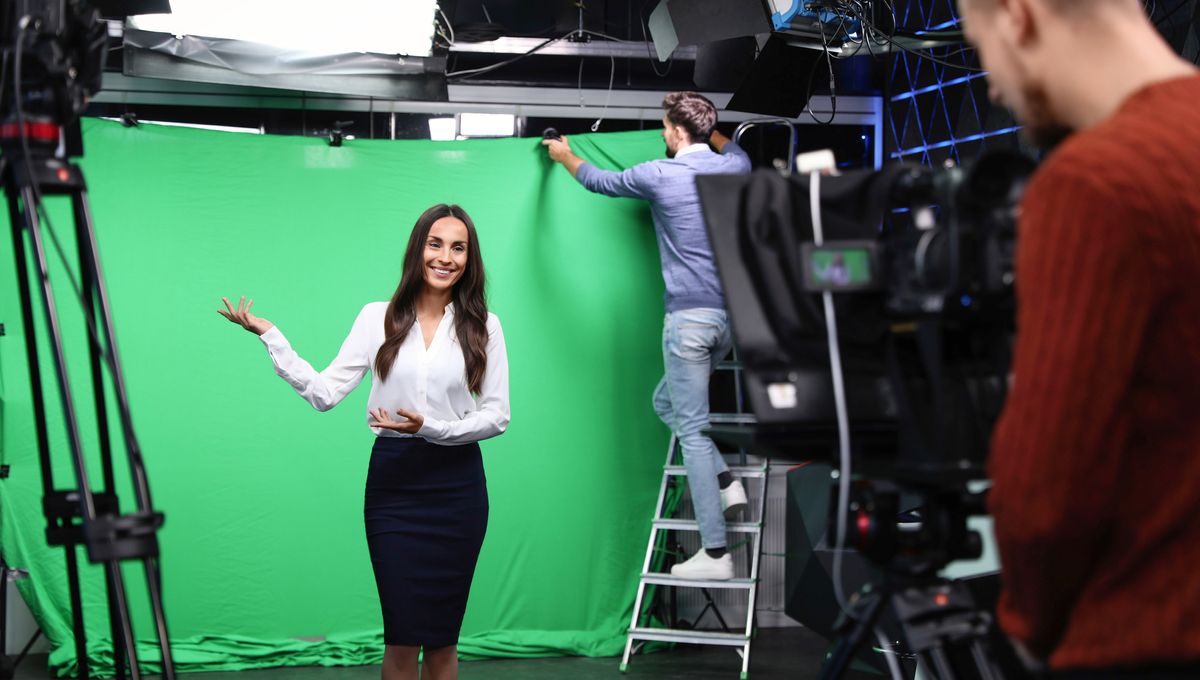
Green screens are that in-your-face verdant color for good reason – but they weren’t always that way. The magic of chroma keying has a long and colorful history, with filmmakers once relying on entirely different colors to pull off their cinematic illusions.
ADVERTISEMENT
Green screens are, urm, green screens that are used as a tool in video production and post-production to fill in the background with digital effects. Technically known as chroma key compositing, or chroma keying, this technique was once reserved for Hollywood directors and weather presenters, but it’s now widely used by streamers, content creators, and anyone with half-decent video editing skills.
One of the main reasons that green is generally used nowadays is that this color doesn’t tend to appear in human skin (unless you are a nauseous cartoon character or dressed up as Shrek).
Human skin color is diverse, but it generally lies in the orange, pink, and yellow portion of the color wheel, which is opposite to the green and blue end. Since humans are often the subject of filming, green provides strong contrast, minimizing the likelihood of the software mistakenly blending the subject with the background.
The second reason has something to do with physics, biology, and the mechanics of cameras. Compared to other colors, green has higher luminance (perceived brightness of a color) than most other colors, meaning a green object appears bolder to us than, let’s say, a red object doused by the same spotlight.
Human eyes have three types of photoreceptive cells (called cones) that have a different sensitivity to light of different wavelengths of color: red, blue, and green. These cones enable us to perceive a wide range of colors through the combination of signals from each type of cone, although it’s evident we have evolved a greater sensitivity to green wavelengths, compared to reds and blues.
ADVERTISEMENT
We’ve basically applied this tried-and-tested model to digital video cameras, which contain sensors to detect red, green, or blue light. However, the number of primary color sensors is not equal because the human eye is more sensitive to green light than to red or blue (the camera, after all, is attempting to mimic how human eyes see the world).
As such, cameras pick up on green more sharply, capturing it with less noise. Because green is captured more vividly, it is more forgiving when the green screen is unevenly lit, with shadows, creases, and other imperfections.
Green isn’t perfect for the purpose, though. Its strong luminance means the color of a green screen can spill onto the subject. In other words, you might sometimes see a slight reflection of the green skin on the human skin. Blue reduces this problem. It has a slightly lower luminance than green, but still contains many of the same properties and advantages described above.
Blue screens were particularly useful for films shot on traditional film stock, as blue-sensitive films were readily available. The original Star Wars trilogy, for instance, is renowned for its groundbreaking use of blue screens, especially in the iconic spacecraft scenes that still look pretty good to this day.
ADVERTISEMENT
Even today, in an era where CGI and other visual effects are taking over mainstream cinema, many blockbusters prefer using blue screens over green screens, or even a combination of both, based on the particular needs of the shot.
Source Link: Why Are Green Screens Green? It Hasn't Always Been This Way